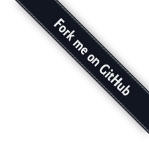These scripts demonstrate the use of IMP and PMI in the modeling of the TFIIH complex using chemical cross-links and electron microscopy (EM) density maps.
For the publication, the following versions of IMP and PMI were used:
The files should also work with a recent version of IMP (see below).
-
yeast:inputs: contains comparative models, structures, cross-linking data, and EM dataoutputs:- contains an example of output files (*.rmf and *.dat) from sampling
models:subunits: contains a Chimera session file and solution density maps for all subunitsdomain_decomposition: contains a Chimera session file and solution density maps for all domains
scripts:sample_multires.py: sampling scriptanalyze.py: script for analysis of the solutions
-
human:inputs: contains comparative models, structures, cross-linking data, and EM dataoutputs:- contains an example of output files (*.rmf and *.dat) from sampling
models:subunits: contains a Chimera session file and solution density maps for all subunitsdomain_decomposition: contains a Chimera session file and solution density maps for all domains
scripts:sample_multires.py: sampling scriptanalyze.py: script for analysis of the solutions
-
yeast:cd yeast/scriptspython sample_multires.pypython analyze.py
-
human:cd human/scriptspython sample_multires.pypython analyze.pypython clustering.py
Note that in both yeast and human cases, the script analyze.py has many different uses: calculating the top 10% of scores, getting density maps, calculating the percentage
of violated constraints, getting PDB files for the models, clustering the top scoring models, getting contact maps etc.
To use each of these functions, one can just comment out the remaining part of the code and retain only the neccessary function each time.
Note that clustering is a 2 step process for the human modeling: the cluster subroutine in analyze.py outputs the distance matrix and the clustering.py script run on that
distance matrix produces the actual clusters.
Author(s): Peter Cimermančič, Shruthi Viswanath, Riccardo Pellarin, Charles Greenberg
Date: September 3rd, 2015
License: LGPL. This library is free software; you can redistribute it and/or modify it under the terms of the GNU Lesser General Public License as published by the Free Software Foundation; either version 2 of the License, or (at your option) any later version.
Testable: Yes.
Publications:
- J. Luo, P. Cimermancic, S. Viswanath, C. Ebmeier, B. Kim, M. Dehecq, V. Raman, C. Greenberg, R. Pellarin, A. Sali, D. Taatjes, S. Hahn, J. Ranish. Architecture of the human and yeast general transcription and DNA repair factor TFIIH, Mol Cell 59, 794-806, 2015.




 Download files
Download files Verified to work with the
Verified to work with the  To install the software needed to reproduce this system with the
To install the software needed to reproduce this system with the
 To set up the environment on the UCSF Wynton cluster to run
this system, run:
To set up the environment on the UCSF Wynton cluster to run
this system, run: